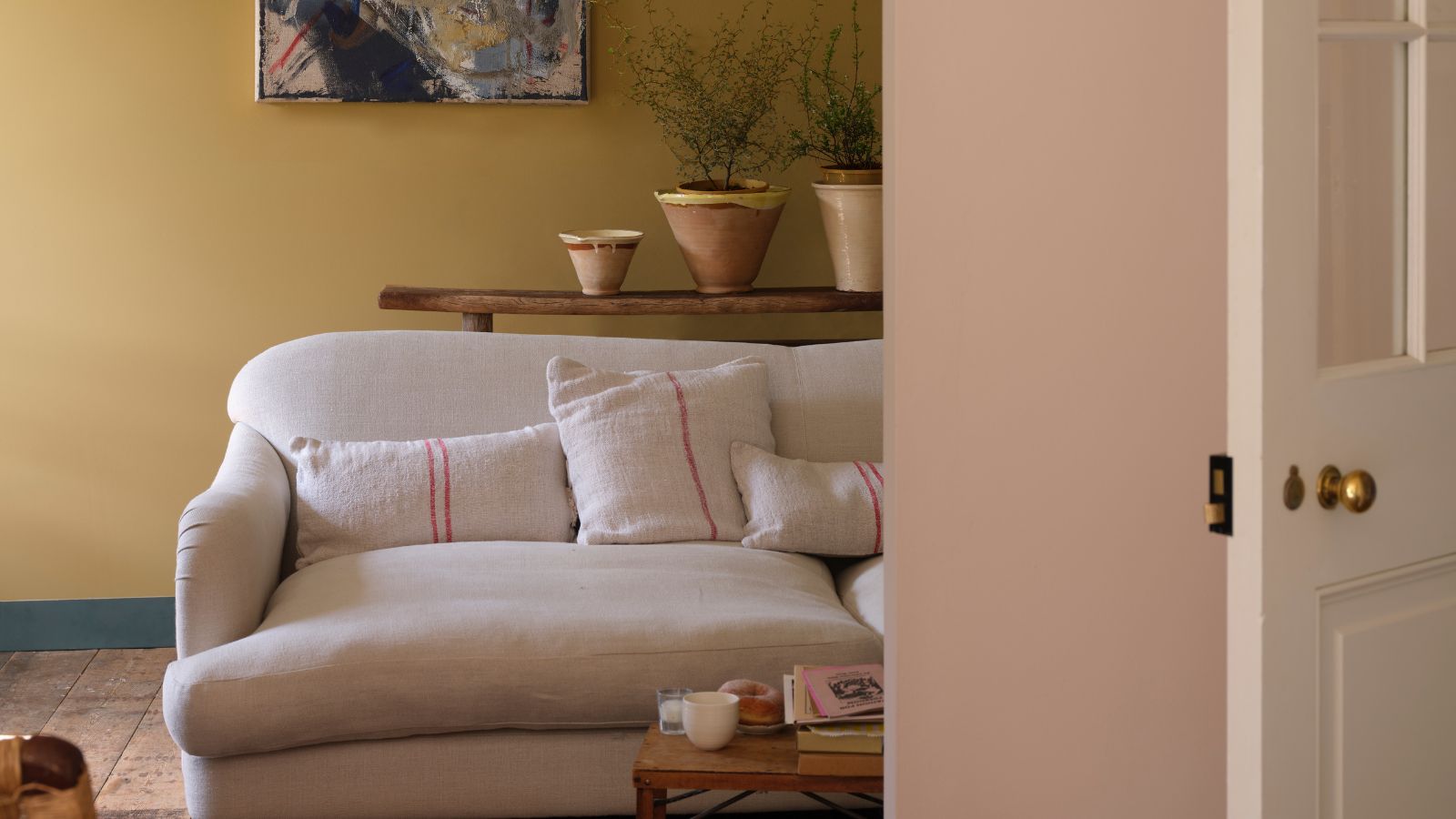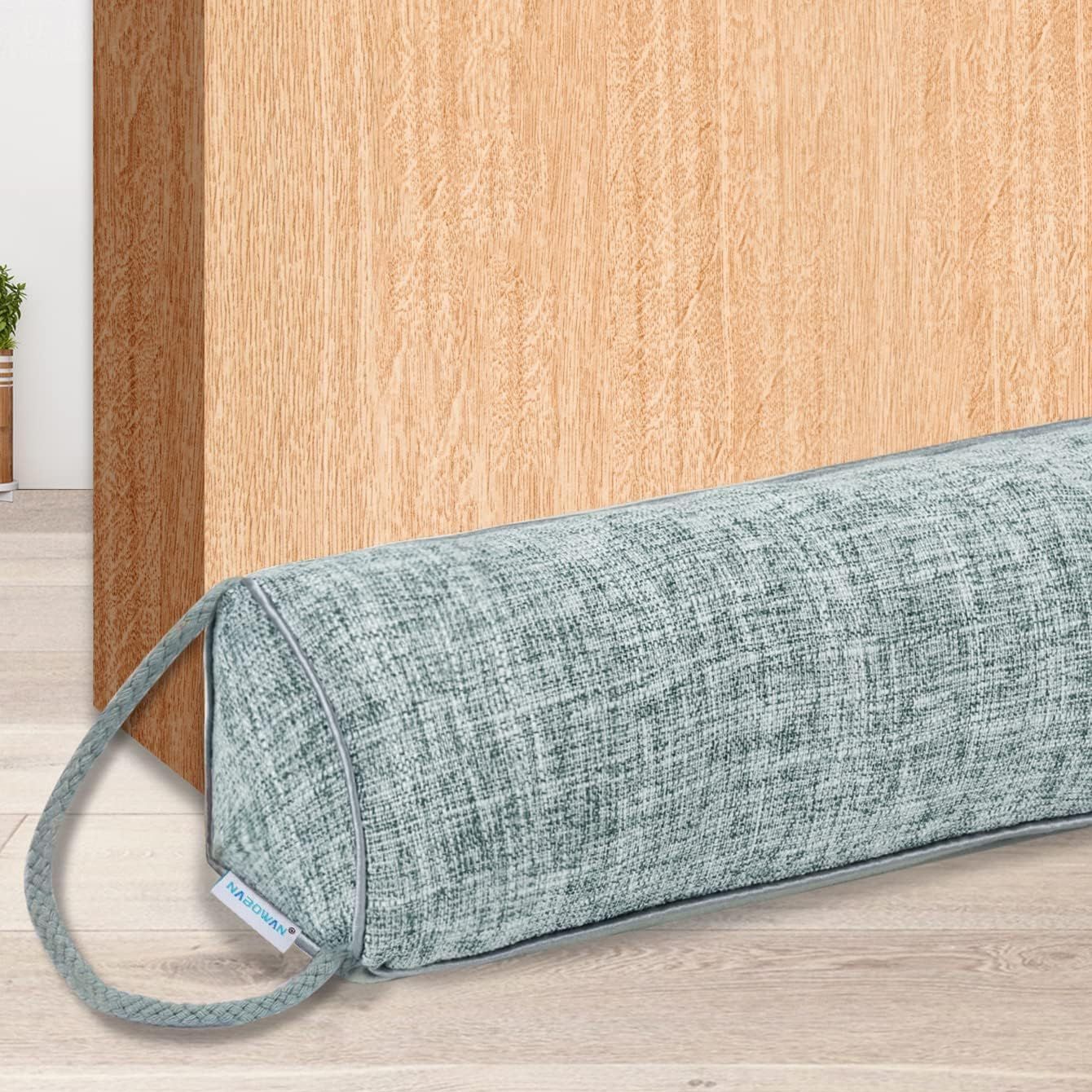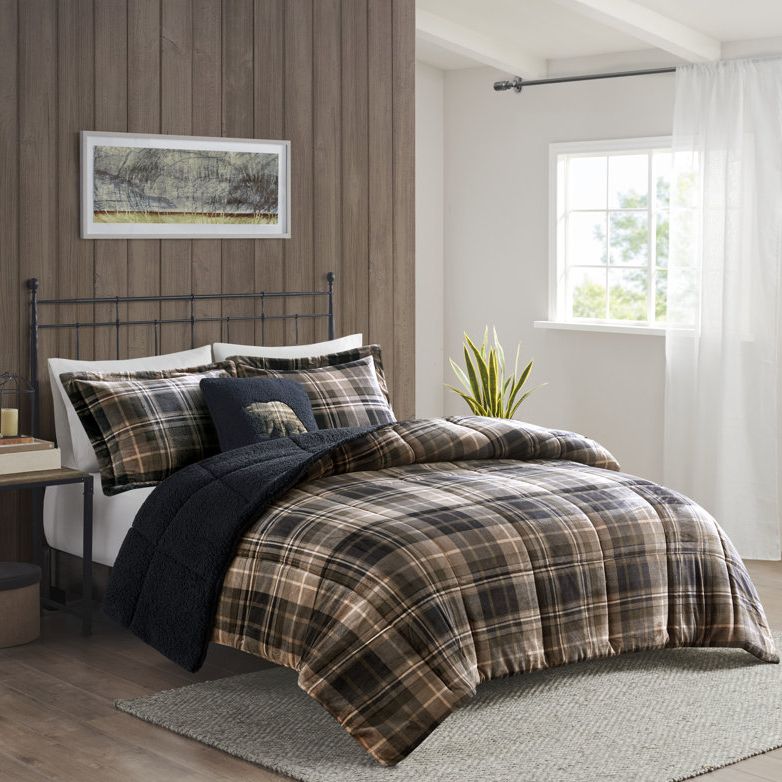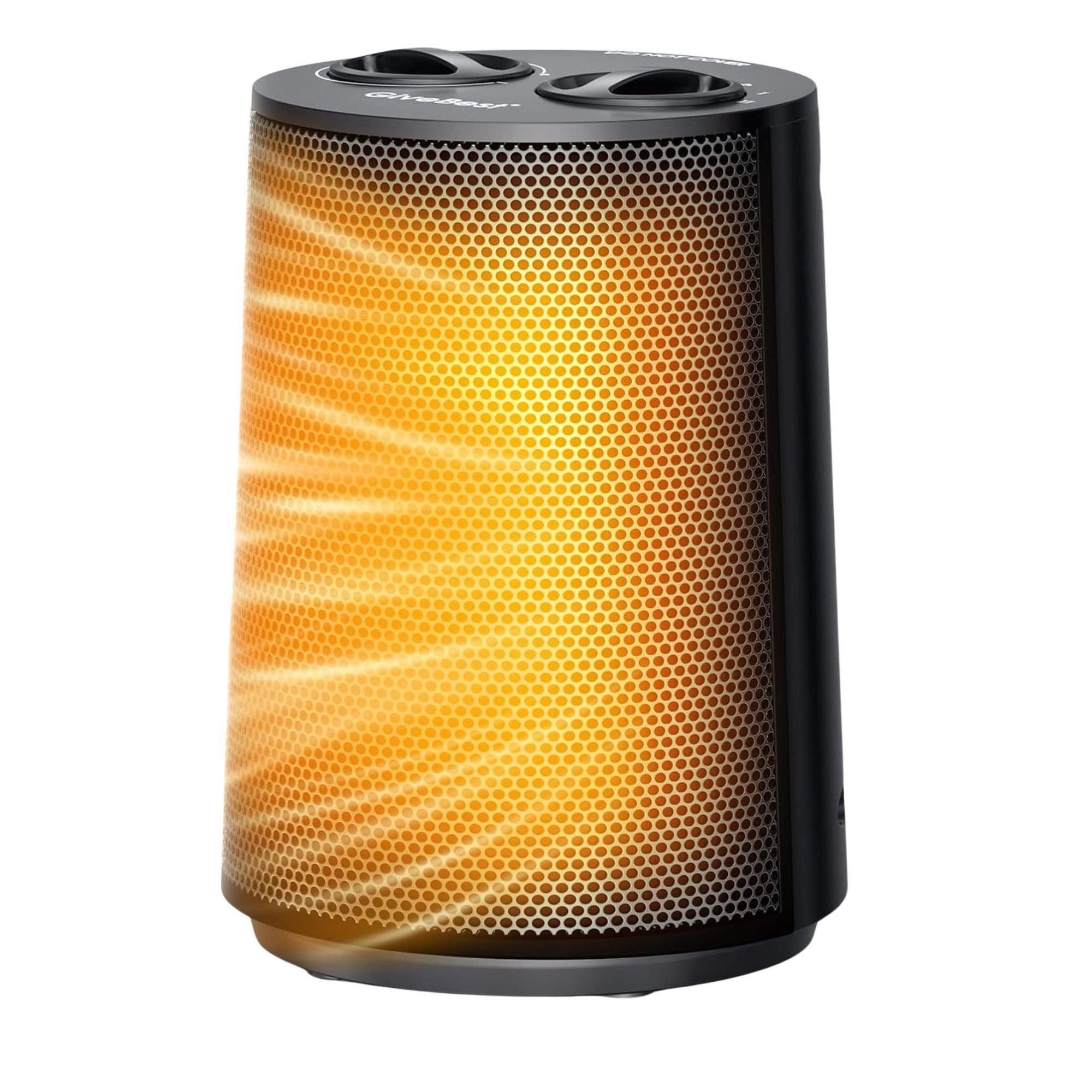I Was Sick of Cold Front Door Drafts Making My Living Room Feel Arctic and Driving Up Energy Costs – A $4 Easy Amazon Fix Has Been A Game-Changer
It's improved comfort, stopped drafts, and reduced my energy bills this winter


Last November, when the bitter winter cold hit, I plugged the large gap under my front door with weatherstripping. It felt like a success at the time because the draft under it had been so severe. But a year on, I’ve realised the weatherstripping bristles are not working well enough, and my entryway is still cold and drafty, leading to a colder living room.
After speaking with experts, including HVAC professionals, I’ve increased my draftproofing this winter with an easy-to-install, stick-on $4 draft blocker from Amazon, for my living room door. I've paired it with a simple $6 Amazon door sweep on the bottom of my front door to double up my draft defenses.
It's only been in play for four days, but already, this pair has helped regulate my home's temperature and stopped drafts that were kicking on my smart thermostat unnecessarily, leading to a hot upstairs and cold downstairs. Plus, I'm now more comfortable in the early mornings and evenings when it is particularly cold, which is the biggest win of all.
The 2 Cheap Fixes I’ve Installed This Winter to Stop Annoying Cold Drafts
Firstly, the solid door sweep on the front door has instantly blocked drafts where my weatherstripping has failed to work sufficiently well.
Josh Michell, HVAC pro and owner of Air Conditioner Lab says, ‘I've come across many homes where a draft like that can cause more damage than people realize. If you're seeing a one-inch or larger gap under the front door, those stick-on brush seals are not going to cut it, especially if the door faces wind or connects to a smaller space like an entryway.’
My house is in a cul-de-sac, but the front door faces the direction of wind movement through our street, and the gap was around an inch, hence the weatherstripping failing.
Josh adds, ‘Those brush-type seals tend to fail because air still pushes through the bristles, especially when wind pressure or stack effect kicks in. They’re better for light drafts but not for gaps over half an inch. A solid neoprene seal physically blocks airflow and holds up better over time.’
Design expertise in your inbox – from inspiring decorating ideas and beautiful celebrity homes to practical gardening advice and shopping round-ups.
He recommends a ‘door shoe’ with a built-in drip cap and adjustable bottom seal. Amazon has one that fits the bill, from Jelostone. Josh says, ‘These typically mount directly onto the bottom of the door and create a mechanical seal against the threshold. You can fine-tune the height depending on how uneven the floor is. Most units can be installed in 20 to 30 minutes with just a drill.’
It's a great option for sure, but as I didn’t want to drill into my door or spend that long installing, I went for a self-adhesive Amazon door sweep. This is also suitable for rentals as it does not make a permanent change or involve any drilling.
Aluminium door shoes are helpful, too, Josh says. ‘They perform better in homes where wind hits the door directly. I’ve installed these in entryways where the indoor temperature dropped by 3 to 5 degrees overnight from air seeping in. After sealing, the space maintained a more even temperature, and thermostats stopped cycling on as often.’
This was exactly my scenario, as my small entryway has an internal door that opens directly into our living room, and is adjacent to our thermostat. Since installing these new fixes, I've been able to turn my thermostat down from 21.5°C (71°F) to 19.5°C (67°F), saving energy usage and bills, while still feeling cozy.
Josh adds, ‘If you want something simpler and don’t mind a visible fix, a weighted fabric draft stopper can help as a secondary backup. These are around $15 to $20 and work best when paired with a mechanical seal. I usually recommend washable ones with non-slip backing if the door gets regular use.’
The Sunolga 38-inch stopper from Amazon has a removable, washable cover and fits gaps up to three inches. It can be used to block heat or cold, making it useful year-round.
I Tried It
Since installing my cold-busting duo to draft-proof my entryway, my house is much more comfortable, and the heating is cycling well. Josh explains, ‘Since your thermostat is nearby, sealing that gap should keep it from misreading the temperature and kicking on more than necessary. I’ve also seen homeowners move the thermostat a few feet away or block air flow to it slightly using an open-top plastic cover. That helps reduce false triggers without affecting room temp readings.’
That's exactly what I've found. Previously, the drafty entryway and therefore the cold adjacent area in my living room, where my thermostat lives, meant the heating kept kicking on, making the upper floor of my home too hot, which impacted how well we could sleep. Meanwhile, downstairs was too chilly to be comfortable.
Now with the draft blocked, the smart thermostat isn't kicking on unnecessarily, and the temperature across both floors of my home is much more even and comfortable.
If, after these fixes, you’re still feeling a draft under your front door, Josh suggests checking the threshold itself. ‘If the door sweep still doesn’t seal tightly after installation,' he says, 'you may need an adjustable threshold plate to raise the contact point. It takes a bit more effort, but it's a good option if the gap is uneven or over an inch. The bonus is that when the bottom seal is done right, it also cuts down on noise from outside, which helps in entryways near roads or shared walls.’
What to Shop
Experts in draft resolution share their top picks for sorting this annoying winter draft problem.

Glenn Wiseman of Top Hat Home Comfort Services advises that if your front door has a large gap, pick a durable, sealed solution. 'The aluminum base withstands wear from frequent door use, while the rubber seal compresses to block drafts and cold air infiltration, helping maintain consistent indoor temperatures and reduce thermostat cycling.'

Alternatively, Glenn suggests a Triangular weighted draft stopper. He says, ‘This non-permanent fix offers good draft blocking, adjusts to irregular floor surfaces, and can be easily removed or cleaned. Its mass and shape effectively stop cold air without the need for hardware.' This fits gaps up to three inches high.

Wes True, General Manager & Operations at Pella Windows & Doors of Omaha and Lincoln, a contractor of windows and doors, says, ‘The M-D Building Products 68247 Door Sweep is my favorite as it offers a firm structure and a strong but flexible seal that allows it to even out bumpy areas. In one case, when one of my clients suffered the same issue with a one-inch gap, it worked wonders.'
Editor's Picks
Alongside blocking drafts, here are three winter essentials our editors love for keeping warm in cold snaps, extreme weather, and being prepared for big freezes without running up an enormous energy bill.

Sleep testing expert at Homes & Gardens, Ottilie Blackhall says, 'During winter, I swear by warm, fleecy bedding to keep cozy all night long, without having to crank up the heat and drive up my energy bills. This set is perfect for that – filled with a hypoallergenic down alternative filler to trap heat, and quilting for a plush and luxurious feel. It's handily machine washable, too, and available in 11 colors, but the brown and black plaid pattern, pictured, is my favorite.'

I used separate heatpads in three areas of my home: My office, bed, sofa, and this is my favorite. It has auto-shut off for safety, as well as six heat settings and timer options to boot. The size is perfect for sitting vertically with it behind your back, across your lap or on your waist or hips when in bed. Zone heating yourself means less big energy costs.

A small portable heater like this, which is available in four colors and comes with built-in safety featuring including auto-shut off and anti-tipping design can transform how comfortable you are without running up enormous bills. These are economical to run.
Having the comfort and affordability of a small portable heater doesn't mean having to compromise on aesthetic.

Punteha was editor of Real Homes before joining Homes and Gardens as Head of Solved. She has written and edited wellbeing, lifestyle and consumer pieces for the national press for 17 years, working across print and digital newspapers and magazines. She’s a Sunday Times bestselling ghostwriter, former BBC Good Food columnist and founding editor of independent magazine, lacunavoices.com. Punteha loves keeping her home clean, has tested and reviewed the latest robot vacuums and video doorbells, enjoys cooking, DIY, decluttering and spending weekends personalizing and organizing her newly-built home, tackling everything from plumbing to tiling and weatherproofing, to home fragrancing and cleaning with luxurious smelling homemade solutions.
You must confirm your public display name before commenting
Please logout and then login again, you will then be prompted to enter your display name.